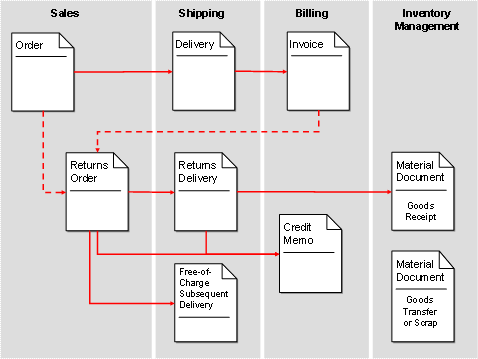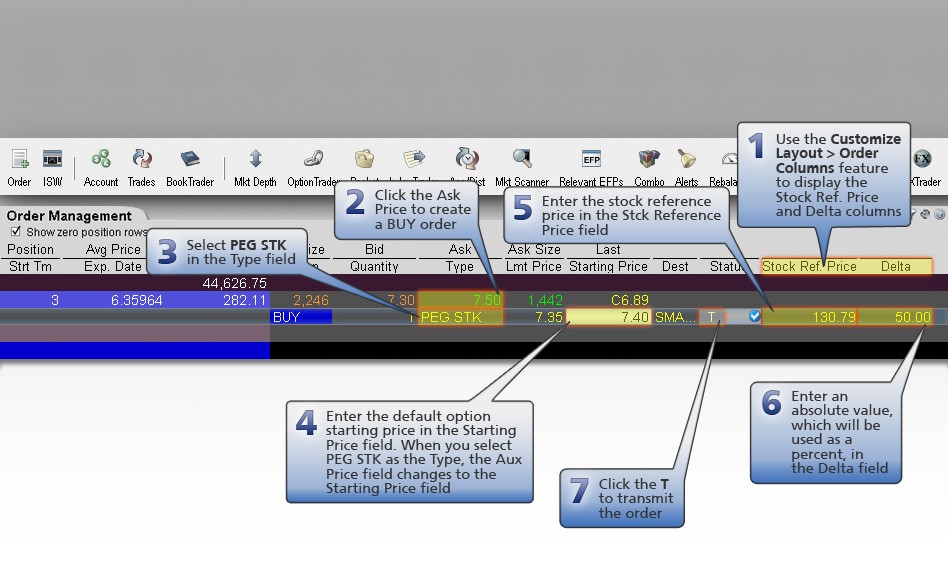Stock Order Types
Post on: 16 Март, 2015 No Comment

Market, Limit, Stop Loss, Buy Stop, Buy Stop Limit and Trailing Stop Orders
On this page I’m going to go over the most common stock order types using simple chart examples.
The trade orders that I’ll show you will be all that you’ll need to get started doing any form of trading, whether its day, swing or position trading of stocks, futures, options, commodities, forex or bonds.
And, you’ll be able to use these order types on all trading platforms. Basically, they’re generic for all traders.
I’ll start with the most basic of stock order types — the Market Order.
MARKET ORDER
There’s two types of Market Orders. Buy Market Order and Sell Market Order. A Buy Market Order is used when you want to buy shares of a stock or to exit your short position (a.k.a. Buy to Cover). A Sell Market Order is used to sell your shares in a stock or initiate a Short position in a stock.
Advantage:
Fast order execution when you need to buy or sell quickly. This stock order type guarantees a trade execution.
Disadvantage:
You’re order is not guaranteed to be filled at a certain price. You have no control over where your order will be filled. When trading high volume, liquid markets there is normally not much of a problem using market orders, but thinner markets and/or the size of your trade may cause slippage and your trade to be filled at a considerable distance from the current inside bid/ask.
MARKET ORDER EXAMPLE
In this example below, Pepsi Co (PEP) is breaking out and you decide that you want in — so you place a Market Order to buy PEP when it’s trading at 63.95. Well, your a bit late and due to the rush of buyers, maybe you don’t get filled until 64.00. Or maybe you get filled at the inside ask of 63.96.
The point is you never know with market orders until your whole order is filled. Also, your market order may get filled at different price levels.
For example, lets say you bought 500 shares of PEP and hit the Sell Market button on your trading platform 10 minutes later when PEP was trading at 64.13.
It’s possible that you might be filled as follows: 300 shares @ 64.12, 100 shares @ 64.11 and 100 shares @ 64.10.
When trading highly liquid stocks or ETFs and especially when trading an emini like ES, if you use a market order you will most of the time get filled at the inside bid or ask very quickly.
LIMIT ORDER
The next stock order type we’re going to look at is the Limit Order. This kind of trade order is used when you only want to buy or sell shares at a specific price. If you would like to buy shares, a Limit Order is always placed below the current traded price of a stock and vice versa for Sell Limit Orders.
Advantage:
You know what your getting with a Limit Order. If you place a Limit Order to buy 500 shares of ABC @ 55.00, and your order fills, that’s exactly what you’ll get => ### shares @ 55.00 or better (lower).
Disadvantage:
Notice I wrote ### shares and not 500 shares. That’s because it’s possible for your order to be filled on only 100 shares @ 55.00 and then miss the boat on the rest of the 400 shares if the stock’s price proceeded to move up after triggering your order. This happens often to traders using Limit Orders. This type of stock order can be very frustrating when price gets very close to your objective, but doesn’t quite make it. Opportunities can be lost.
LIMIT ORDER EXAMPLE
So what are some examples of when a trader might want to use a Limit Order? I’ll show you a couple in this next chart below.
Zimmer Holdings (ZMH) gaps up and makes an early morning move and you decide you want to to buy ZMH only if price makes it back below it’s 20 sma. You notice price getting close to the average so you place a Limit Order to buy @ 64.46. Price moves below the average and right through 64.46. There’s no doubt here that your order would have been filled at 64.46 or lower.
Now that you own shares of ZMH you decide that your willing to sell all your shares for no less than 64.85. So you place a Sell Limit Order for 64.85 and later in the day price makes it way up and through that price level, so all of your shares are sold for at least 64.85.
Note that if you had placed a Sell Limit Order at 65.00 your order would not have been filled. So at the end of the day, since you are a day trader, you would’ve had to cancel the Limit Order and make a new Market Order to close out your position for the day. Some trading platforms will close out positions automatically for you at a specified time.
MARKET ORDER VS LIMIT ORDER
Why would a trader choose one of the stock order types (Market or Limit) over the other. It really comes down to a trader’s strategy. Some exit strategies call for the use of only Limit Orders. For instance a trader might use a Market Order or Buy-Stop Order (this one’s coming up) to enter a breakout trade. but then have an exit strategy based on price targets or profit objectives.
In this case, the trader would use Limit Orders. One of the nice things about a Limit Order is one you’ve entered a position and set your stop-loss, a Limit Order can be placed for a target price. This means it’s possible to not have to nurse your positions all day long. You can enter positions in the morning and come back in the late afternoon to see whether your stop-loss was hit, your price target was hit, or if you still have an open position.
Another popular use of Limit Orders is with Counter-Trend trading methods. Many traders use this stock order type for catching price action when a stock deviates or stretches far enough from it’s mean (moving average).
Frustration and anxiety though can cause traders to cancel and switch from Limit to Market Order when price is bobbing around close by their limits. Especially, if it goes on for an extended period of time in the afternoon and you’ve been holding a trade since the morning.
Alright, I’m starting to run my mouth. or fingers. Let’s move on to the next stock order type which every trader (imho) must use on every trade — the Stop Loss Order
STOP LOSS ORDER (aka Stop)

This stock order type is very straight forward and very important. It’s simply the line that you draw in the sand, or in our case the chart, that means you can’t take any more pain than that particular price. If you buy a stock and price goes below your entry price, you must have a place on that chart that says. Stop. No more pain, I’m out!
Keep yourself from forgetting to place Stops by using trading software that places Stops automatically for you.
I go into more detail about Stops here => Stock Day Trading System. But before you head out to that page, look at a chart example of a Stop Loss Order below.
In this example you buy SPY very close to a support line and place your stop immediately below the price. SPY starts to move in your desired direction, but then rolls over. As soon as price trades at your Stop Loss Order price, it’s turns into a market order to sell. As with any Market Order, you don’t know what price you’ll be filled at until its done. This information will be shown instantly on your platform screen.
Does it hurt. Yes, but look at where your position would be if you held on until the end of the day, hoping for price to come back. Don’t use a Stop Order and I can say with almost certainty you will be out of the game sooner than later.
BUY STOP AND SELL STOP ORDERS
These stock order types are must-haves for breakout traders. They enable a trader to place a buy or sell (short) order in anticipation of breakout of a support or resistance line.
For instance, if you wanted to buy General Mills (GIS) below if it broke above the lateral (yellow), instead of sitting there in front of your screen with your eyes glued to the chart and using a Market Order, you could instead use a Buy Stop Order placed directly above the lateral at 37.61. When price hits 37.61, the order becomes a Market Order.
If you see an opportunity for a breakout trade in the opposite direction, you can use a Sell Stop Order to create a short position.
If you find that the breakout trades that your getting into create too much slippage, and you’re getting filled too far from the stop price, there is another stock order type that is a cousin of the Buy Stop called a Buy Stop Limit Order. It basically works the same way except that you input another price, that tells the platform/broker I’m not willing to pay any more than this price after a breakout
In the example below that price might be, say, 37.65. This means if your order doesn’t get filled immediately at 37.62, you’re willing to accept slippage up until 37.65. The downside of course to using this type of trade order, is that price might explode upward, you don’t get filled, and price continues to rocket upward without you aboard.
TRAILING STOP ORDER
The last of the stock order types I’ll cover is the Trailing Stop Order. The whole purpose of this order is to protect existing profits after buying a stock, by ratcheting up in staircase fashion as price moves up. The Trailing Stop is designed to increase as price moves up, but will not go down if the market price falls. If the stop is hit, it becomes a Market Order. The exact opposite occurs in the case of a short trade.
You can also use basic technical analysis such as support and resistance or price indicators like a moving average as trailing stops. With this method you’ll need to adjust stops manually as price move. I have a whole section on this topic here ==> Trailing Stop Loss
One last thing. If day trading, make sure you check the box on your default order page that says Day and not GTC (Good Till Cancelled), otherwise you could have open orders the next day, or later, that you’re unaware of.
And ALWAYS check your Open Orders management screen at the end of the day to make sure all positions are flat. If you’re trading platform allows you to set a time to flatten all positions automatically near the end of the session, consider using it to help prevent open position mistakes.














